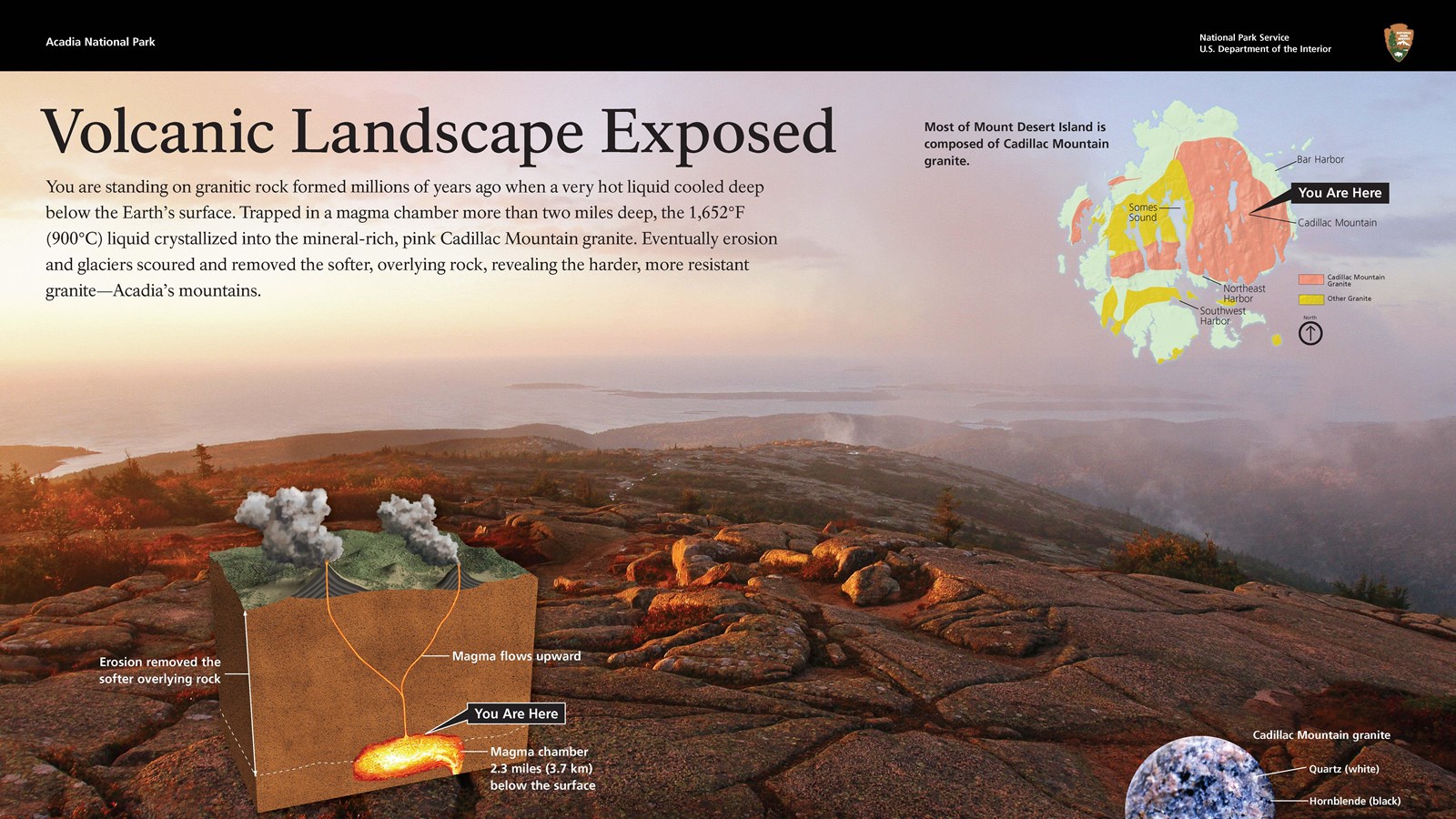Atop a barren landscape of patchy granite rocks at Cadillac Mountain's summit, a wayside exhibit features an informational panel displayed at an angle.
Pink, gray, and green colors mottle the shelf-like rocks. This vantage point offers a panoramic view of Frenchman Bay and mountains in the distance. A sign anchored in a small carpet of vegetation indicates a restoration area, where visitors may not walk.
The exhibit's title,"Volcanic Landscape Exposed," appears over an expansive view of cracked pinkish rocks.
Text explains: "You are standing on granitic rock formed millions of years ago when a very hot liquid cooled deep below the Earth's surface. Trapped in a magma chamber more than two miles deep, the 4,652F liquid crystallized into the mineral-rich, pink Cadillac Mountain granite. Eventually erosion and glaciers scoured and removed the softer, overlying rock, revealing the harder, more resistant granite - Acadia's mountains."
A note accompanies a diagram showing a larger proportion of Cadillac Mountain granite to other granite: "Most of Mount Desert Island is composed of Cadillac Mountain granite."
Another diagram shows how the volcanic landscape was formed. An arrow points to the softer overlying rock removed by erosion. Bright lines to the surface from the magma chamber demonstrate how magma flows upward. The magma chamber 2.3 miles below the surface appears as a bright fiery area. An arrow points to the chamber: "You Are Here."
A small circular inset provides a close-up of Cadillac Mountain granite, composed of rough crystal shapes. These include quartz, which is white, hornblende (black), and feldspar (pink).

